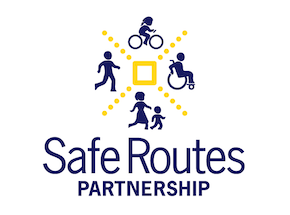The National Highway Traffic Safety Administration (NHTSA) has developed videos and training resources on bicyle and pedestrian safety for law enforcement.
This guide, created through a contract from the Centers for Disease Control and Prevention, is intended to give Safe Routes to School practitioners, teachers, school administrators and others the necessary background information to fully understand the positive benefits of teaching bicycle and pedestrian education in the classroom.
The Safe Routes Partnership's 2011-2015 final Strategic Plan was adopted by our Steering Committee on November 3, 2010. A sincere thank you goes out to the nearly 1,000 people who were interviewed, completed a survey, attended our annual meeting and/or provided written comments on the draft strategic plan.
This report scientifically reviews the literature on child pedestrian education and discusses possible child pedestrian safety programs that could be more effective in keeping child pedestrians safe.
As the project progresses, it will offer more precise benchmarks and recommendations for advocates and government officials so that they have the data they need to improve bicycling and walking in the United States and eventually all of North America.
Steps to a Walkable Community compilesmultidisciplinary tactics that readers can assemble into customstrategies designed for their community’s circumstances. The guidecontains tactics for building or rebuilding cities and suburbs in ways thatencourage walking.
The purpose of this guide is to help bicycle advocates review transportation projects to ensure that bicycle facilities are included inthe design. The construction, retrofit or expansion of a public road involves many steps by local, regional and state governmental agencies.
This document provides information about the methodology and a user guide for WHO's tool for economic assessment of the health effects of walking and cycling.
This report provides an introduction to different types of walking facilities that can be constructedin rural areas. It includes case studies of a number of communities building creative and cost-effective walking facilities.
This report highlights factors across states that are critical to campaigns for transportation funding and provides examples of successful strategies and tactics.
